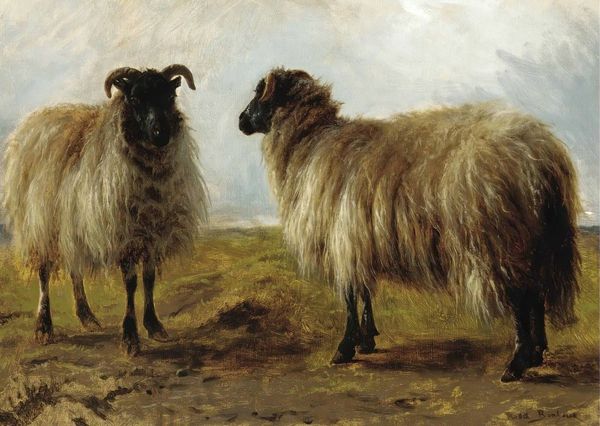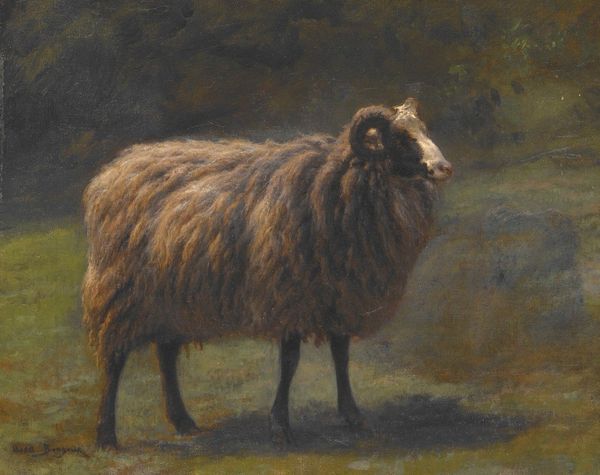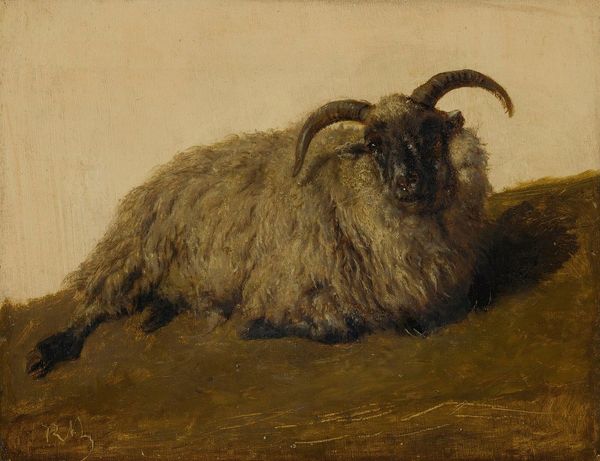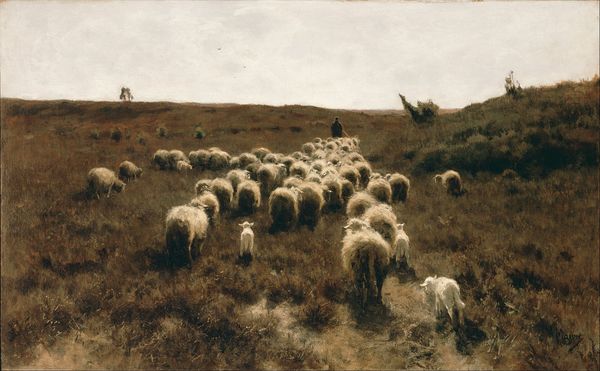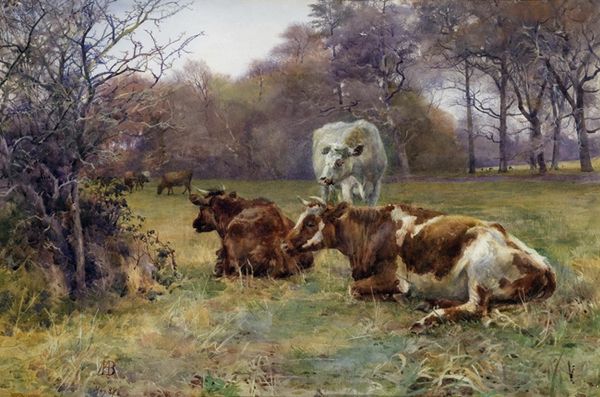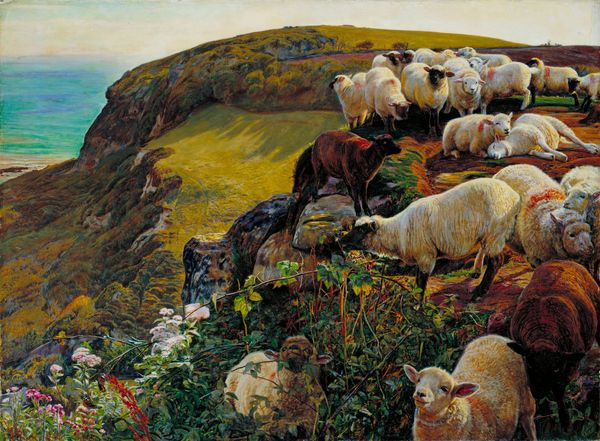
painting, oil-paint
#
portrait
#
painting
#
oil-paint
#
landscape
#
oil painting
#
romanticism
#
animal portrait
#
realism
Copyright: Public domain
Curator: My first thought is "Oh, these sheep are just so content". Like, deeply at peace. They all look like they're enjoying a warm nap, sunning themselves after a long day of just...being sheep. It’s remarkable! Editor: Yes, I agree. They have a distinct feeling of serenity. The way they're arranged together gives the impression of mutual dependence and communal comfort. These qualities can certainly offer an understanding of social dynamics in rural communities, especially labor distribution. Curator: Exactly! What I especially adore is how Bonheur handles the textures. The wool practically begs to be touched, you know? You just want to dive right into that fleecy embrace. It’s masterfully done with oil paints. She had a deep love for animals; it's evident in how she captured them. Editor: Indeed. It's fascinating to view how Bonheur, who was deeply enmeshed in animal life, depicts them through an elevated lens, especially given the broader economic structures wherein their bodies, their fleeces, have historical and continued use. It makes me think of Donna Haraway’s concept of companion species... Curator: Oh, I love that comparison! They're truly more than just wool producers in her eye. They possess distinct individual qualities, yet Bonheur has united them here so sensitively. It feels almost spiritual! It is important to highlight the ways gender roles shape interactions with agriculture; for Bonheur, painting professionally also brought questions surrounding the types of knowledge or skill expected of female animaliers. Editor: Certainly. In regards to gender, it’s not uncommon that artists like Bonheur navigated social conventions within the art world. I think there is a kind of dialogue created by how she negotiates rural imagery that romanticizes it as pastoral but still speaks to labor and agriculture. What are your overall feelings towards realism or Romanticism as descriptive style tags? Curator: Oh, well for me the debate is unnecessary since the distinction dissolves upon further consideration of feeling versus technique and how entwined the two can become! Regardless of the critical background, "Heads of Ewes and Rams" just warms my heart; it evokes simpler days on the farm! Editor: It leaves me feeling that this pastoral imagery acts as a social mirror. It allows us to ruminate over our ties with animals and ponder their importance, especially within larger dialogues of industrialization.
Comments
No comments
Be the first to comment and join the conversation on the ultimate creative platform.
